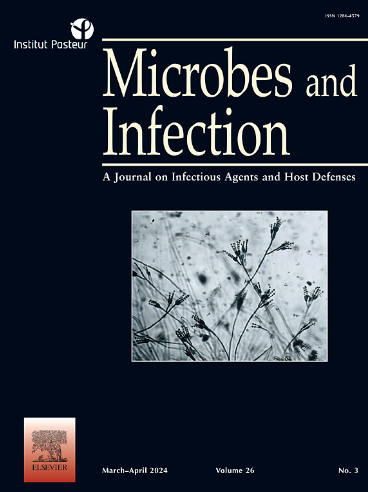基于机器学习的与原发性胆汁性胆管炎发展为肝硬化相关的肠道微生物组特征描述
IF 2.6
4区 医学
Q3 IMMUNOLOGY
引用次数: 0
摘要
背景:原发性胆道胆管炎(PBC)与肠道菌群密切相关。本研究旨在探讨PBC发展为肝硬化后肠道菌群的特点。方法利用16S rRNA基因测序方法筛选进展为肝硬化的PBC患者肠道菌群的差异。然后,我们将数据分成训练集和验证集,分别使用7种不同的机器学习(ML)模型进行验证,计算并比较准确率、F1评分、精度和召回率,筛选影响PBC肝硬化的优势肠道菌群。结果bc肝硬化患者肠道菌群多样性和丰富度下降。此外,PBC肝硬化患者的肠道菌群组成也发生了变化。粪杆菌和Gemmiger菌的丰度显著降低,细络菌和链球菌的丰度显著增加。此外,机器学习方法确定链球菌和Gemmiger是肝硬化PBC患者的主要肠道微生物群,作为非侵入性生物标志物(AUC = 0.902)。结论PBC肝硬化患者肠道菌群组成和功能发生了显著变化。链球菌和Gemmiger可能成为预测PBC进展到肝硬化的非侵入性生物标志物。本文章由计算机程序翻译,如有差异,请以英文原文为准。
Machine learning-based characterization of the gut microbiome associated with the progression of primary biliary cholangitis to cirrhosis
Background
Primary biliary cholangitis (PBC) is associated closely with the gut microbiota. This study aimed to explore the characteristics of the gut microbiota after the progress of PBC to cirrhosis.
Method
This study focuses on utilizing the 16S rRNA gene sequencing method to screen for differences in gut microbiota in PBC patients who progress to cirrhosis. Then, we divided the data into training and verification sets and used seven different machine learning (ML) models to validate them respectively, calculating and comparing the accuracy, F1 score, precision, and recall, and screening the dominant intestinal flora affecting PBC cirrhosis.
Result
PBC cirrhosis patients showed decreased diversity and richness of gut microbiota. Additionally, there are alterations in the composition of gut microbiota in PBC cirrhosis patients. The abundance of Faecalibacterium and Gemmiger bacteria significantly decreases, while the abundance of Veillonella and Streptococcus significantly increases. Furthermore, machine learning methods identify Streptococcus and Gemmiger as the predominant gut microbiota in PBC patients with cirrhosis, serving as non-invasive biomarkers (AUC = 0.902).
Conclusion
Our study revealed that PBC cirrhosis patients gut microbiota composition and function have significantly changed. Streptococcus and Gemmiger may become a non-invasive biomarker for predicting the progression of PBC progress to cirrhosis.
求助全文
通过发布文献求助,成功后即可免费获取论文全文。
去求助
来源期刊

Microbes and Infection
医学-病毒学
CiteScore
12.60
自引率
1.70%
发文量
90
审稿时长
40 days
期刊介绍:
Microbes and Infection publishes 10 peer-reviewed issues per year in all fields of infection and immunity, covering the different levels of host-microbe interactions, and in particular:
the molecular biology and cell biology of the crosstalk between hosts (human and model organisms) and microbes (viruses, bacteria, parasites and fungi), including molecular virulence and evasion mechanisms.
the immune response to infection, including pathogenesis and host susceptibility.
emerging human infectious diseases.
systems immunology.
molecular epidemiology/genetics of host pathogen interactions.
microbiota and host "interactions".
vaccine development, including novel strategies and adjuvants.
Clinical studies, accounts of clinical trials and biomarker studies in infectious diseases are within the scope of the journal.
Microbes and Infection publishes articles on human pathogens or pathogens of model systems. However, articles on other microbes can be published if they contribute to our understanding of basic mechanisms of host-pathogen interactions. Purely descriptive and preliminary studies are discouraged.
 求助内容:
求助内容: 应助结果提醒方式:
应助结果提醒方式:


